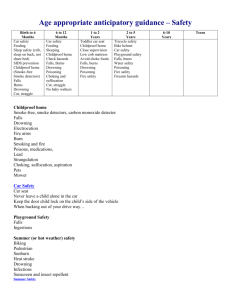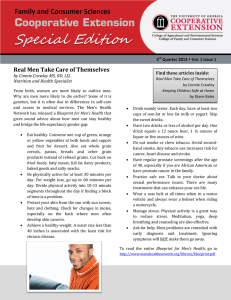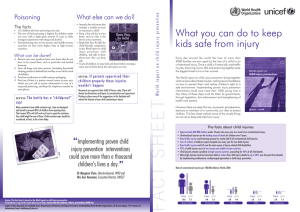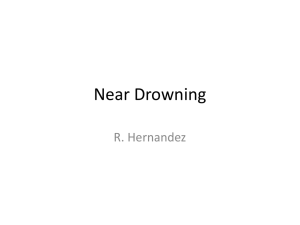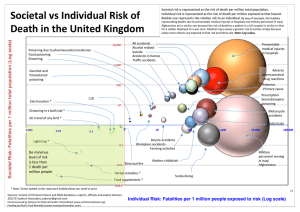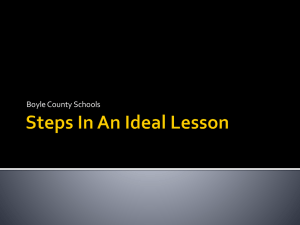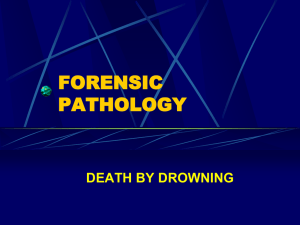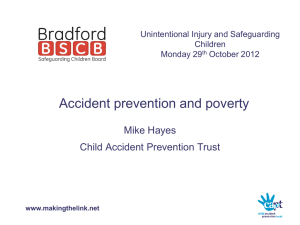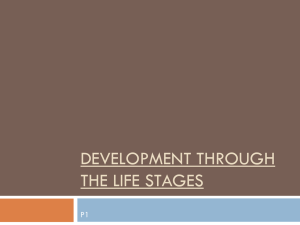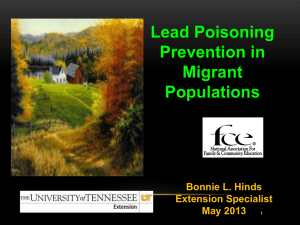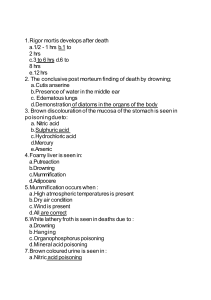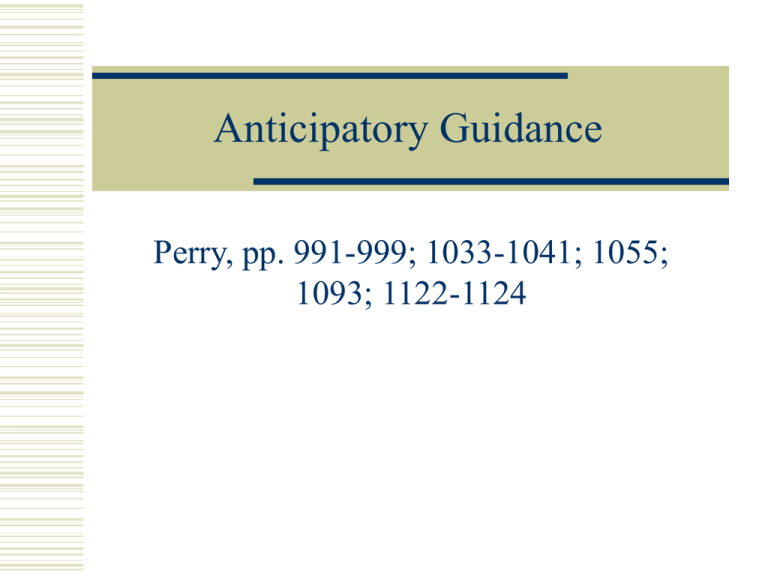
Anticipatory Guidance
Perry, pp. 991-999; 1033-1041; 1055;
1093; 1122-1124
Guidance and Safety
Anticipatory guidance is about 2 things:
Caregiver understanding of child development
and thus anticipating the child’s needs and
understanding behavior
Educating caregivers about injury prevention
Nursing Responsibilities
Need to be aware of risks in each age group in order
for anticipatory prevention teaching to occur.
Also need to have understanding of child
development and behavior.
Enables nurse to guide parents regarding
childrearing practices that will help prevent
problems.
Ideally, discuss risks before each age group occurs.
Healthy People 2010
Objectives R/T Safety
Commonalities in all age groups:
Poisoning
MVA/Pedestrian accidents
Fire
Drowning
Homicide/suicide
Head injuries
Food safety
Dog bites
Sports protection
Abuse/assault/rape (covered in a future course)
Injury Prevention
In your text, all pediatric age groups will include all
or some of the following categories:
Aspiration
Suffocation/drowning
MVAs (#1 cause of death in all groups x infants)
Falls
Poisoning
Burns
Bodily injury
Anticipatory Guidance During
Infancy
Infancy includes all the injury prevention
categories
See interventions in Table 36-1, pp. 992-993
See Patient Teaching Boxes on pp. 1000 &
1001
Infancy cont’d
Three leading causes of accidental death in
U.S. were suffocation, MVAs, drowning
Remember that overall leading cause of
death in infants is congenital anomalies, not
accidents.
Infant needs constant supervision and
vigilance d/t increasing skills and curiosity.
During Early Childhood
(Toddlers and Preschoolers)
Includes all categories; see Table 37-3, 1034-1035
Also look at Guidance p. 1056
Toddlers are at risk because of high activity level,
high curiosity, oral fixation, limited reasoning
ability, esp. for poisoning
Preschoolers understand reasons for rules; child
care focus shifts from protection to education; good
time for development of long-term safety behaviors
(e.g. swimming lessons, bike helmets)
School Age
Includes MVAs, drowning, burns, poisoning,
and bodily damage. See Table 39-2, p. 1095
Less injuries d/t more refined coordination
and skills, and increased cognition and
understanding.
Also see Guidance on p. 1084.
Adolescence
Adolescent concerns are pregnancy, STDs, eating
disorders, suicide, accidents, homicide
Categories include MVAs, falls, drowning, burns,
poisoning , bodily damage. See Box 40-3, p. 1123
Caregivers also need information regarding
developmental changes and process of gaining
independence—see Guidance on p. 1125
Adolescence cont’d
MVAs—single greatest cause of serious and fatal
injuries in teens—60% male—alcohol frequently a
factor; 10% may have been suicides
Firearms/other weapons—powder, paint, BB
Sports injuries—football with boys; gymnastics
with girls. Important that sport fits body type and
ability and that protective gear is worn
Adolescence cont’d
Adolescents have a sense of
indestructiveness accompanied by the “it
won’t happen to me syndrome” causing them
to take chances in areas of driving, sex, drugs
and alcohol, daredevil activities, and defying
authority.

